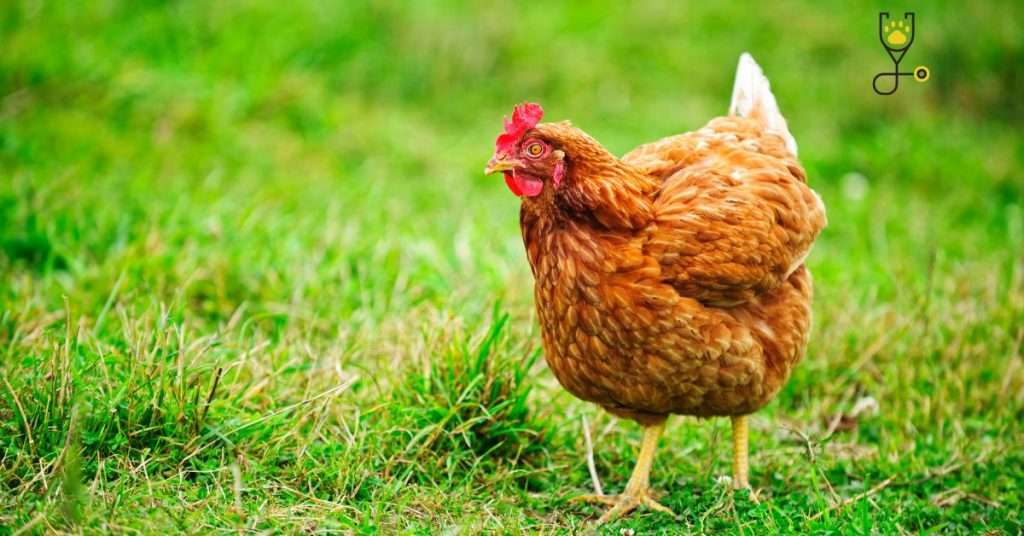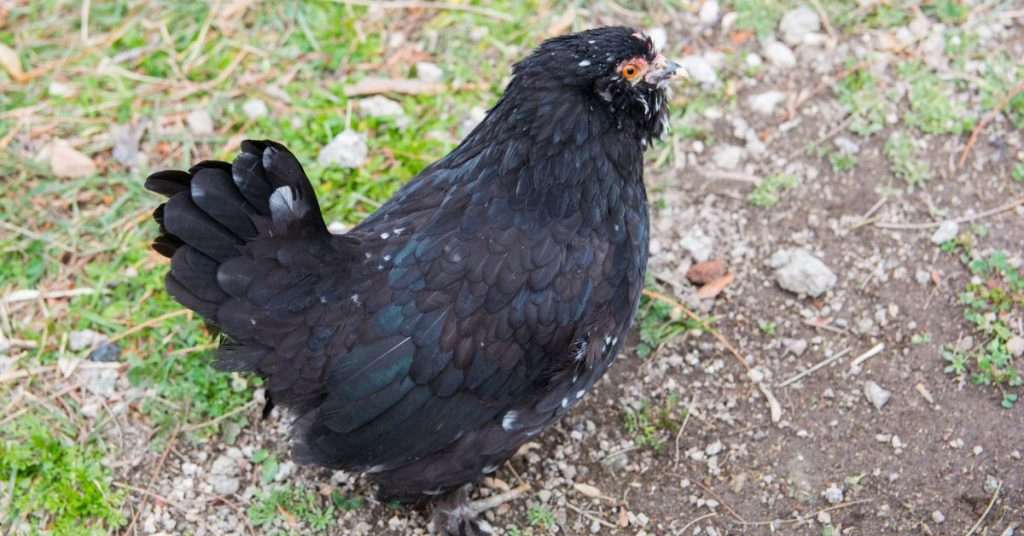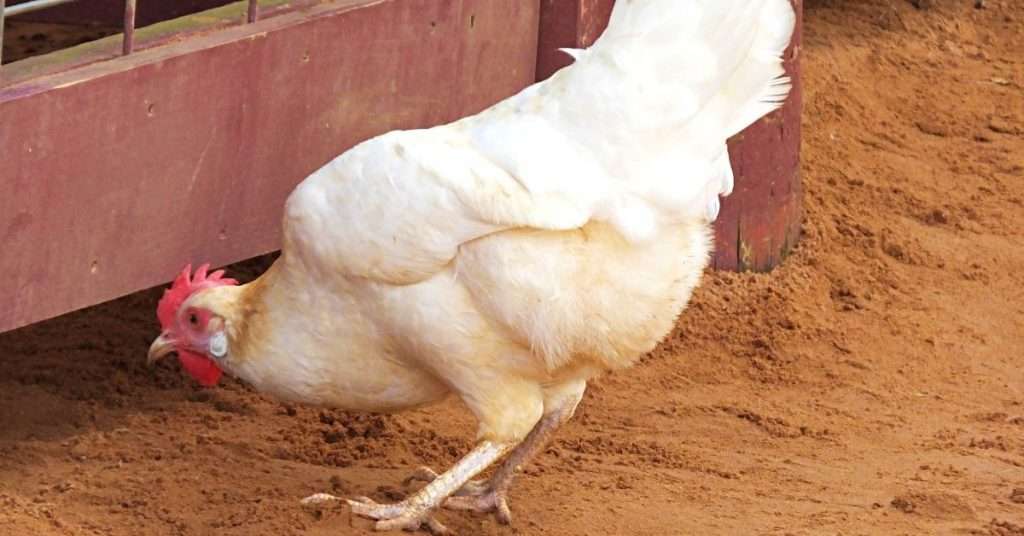Have you ever noticed that eggs come in different colors? White, brown, green, blue, and even pink eggs can be found in grocery stores. But where do these different colors come from? And why are they different?

Two Types of Pigment in Chicken Eggs
When it comes to chicken eggs, there are two primary types of pigment that can cause coloration to occur.
Porphyrin
The first is called porphyrin, and it’s responsible for most brown and red hues.
Oocyanin
The second is Oocyanin which is responsible for blue and green hues.
Interestingly, different breeds of chickens tend to produce different colored eggs. For example, Rhode Island Reds usually lay brown eggs, while Araucanas tend to lay blue or green eggs. Of course, there are always exceptions to the rule! Regardless of breed, all chicken eggs start out as white. It’s only as they travel down the hen’s oviduct that they pick up pigment from the hen’s body. So the next time you see a colorful egg, take a moment to appreciate the complex biology that made it possible.
Read More: Everything You Need to Know About Pekin Ducks
Best Breeds for Brown Egg Production
If you’re interested in brown eggs, there are certain chicken breeds that are more likely to produce them. Some of the best brown egg layers include:
- Rhode Island Red
- New Hampshire Red
- Plymouth Rock
- Sussex
- Golden Comet
1). Rhode Island Red:
One of the most popular chicken breeds, Rhode Island Reds are known for their egg-laying abilities. On average, they can lay around 280 eggs per year!
2). New Hampshire Red:
Another great brown egg layer, New Hampshire Reds are very similar to Rhode Island Reds. They’re also excellent foragers and do well in colder climates.
3). Plymouth Rock:
A dual-purpose breed, Plymouth Rocks are good for both egg and meat production. They’re also one of the hardiest chicken breeds, able to withstand cold weather and tough conditions.
4). Sussex:
Sussex chickens are a beautiful breed that comes in several different color varieties. They’re friendly birds that make great pets, and they’re also good layers, averaging around 200 eggs per year.
Read More: A Guide to Risky Foods You Should Never Feed Your Pet Chickens
5). Golden Comet:
A hybrid chicken breed, Golden Comets are a cross between Rhode Island Reds and White Leghorns. They’re excellent layers, averaging around 250 eggs per year.
If you’re interested in brown eggs, there are certain chicken breeds that are more likely to produce them.
Brown Egg Layer Comparison
| Name | Average Eggs Per Year | Notes |
|---|---|---|
| Rhode Island Red | 280 | One of the most popular chicken breeds |
| New Hampshire Red | 250 | Similar to Rhode Island Reds |
| Plymouth Rock | 200 | Dual-purpose breed, good for eggs and meat. |
| Sussex | 200 | Comes in several color varieties |
| Golden Comet | 250 | Hybrid breed, a cross between Rhode Island Reds and White Leghorns |

The Best Breeds for Blue Eggs
While there are fewer chicken breeds that lay blue eggs, there are still a few that stand out. Some of the best blue egg layers include:
- Araucana
- Cochin
- Easter Egger
1). Araucana:
One of the most popular blue egg layers, Araucanas are a beautiful breed of chicken. They’re known for their tufted feathers and unique appearance. On average, they can lay around 200 eggs per year.
2). Cochin:
A large breed of chicken, Cochins are known for their fluffy feathers and friendly personality. They make great pets and can lay around 150 eggs per year.
3). Easter Egger:
A hybrid chicken breed, Easter Eggers are a cross between Araucanas and other chicken breeds. They can lay a wide range of colored eggs, from blue to green to brown. on average, they can lay around 200 eggs per year.
While there are fewer chicken breeds that lay blue eggs, there are still a few that stand out.
Read More: How to Prepare Your Chicken Coop for Bad Weather
Blue Egg Layer Comparison
| Name | Average Eggs Per Year | Notes |
|---|---|---|
| Araucana | 200 | One of the most popular blue egg layers |
| Cochin | 150 | Large breed of chicken, known for their fluffy feathers |
| Easter Egger | 200 | Hybrid breed, can lay a wide range of colored eggs. |

White Egg Layers
There are many chicken breeds that lay white eggs, but some of the best include:
- Leghorn
- Ancona
- Minorca
- Faverolle
1). Leghorn:
One of the most popular chicken breeds, Leghorns are known for their egg-laying abilities. On average, they can lay around 280 eggs per year!
2). Ancona:
A Mediterranean breed of chicken, Anconas are known for their black plumage with white spots. They’re excellent layers and can average around 200 eggs per year.
3). Minorca:
A Spanish breed of chicken, Minorcas are large birds with white feathers. They’re great layers and can produce up to 280 eggs per year.
4). Faverolle:
A French breed of chicken, Faverolles are known for their beards and muffs. They make great pets and can lay around 200 eggs per year.
There are many chicken breeds that lay white eggs, but some of the best include:
White Egg Layer Comparison
| Name | Average Eggs Per Year | Notes |
|---|---|---|
| Leghorn | 280 | One of the most popular chicken breeds |
| Ancona | 200 | A Mediterranean breed of chicken with black plumage and white spots |
| Minorca | 280 | A Spanish breed of chicken, large birds with white feathers |
| Faverolle | 200 | A French breed of chicken, known for their beards and muffs. |
No matter what type of egg you’re looking for, there’s sure to be a chicken breed that can lay it! From brown eggs to blue eggs, there are many different varieties of chicken that can suit your needs. Do some research to find the perfect chicken breed for you and your family!